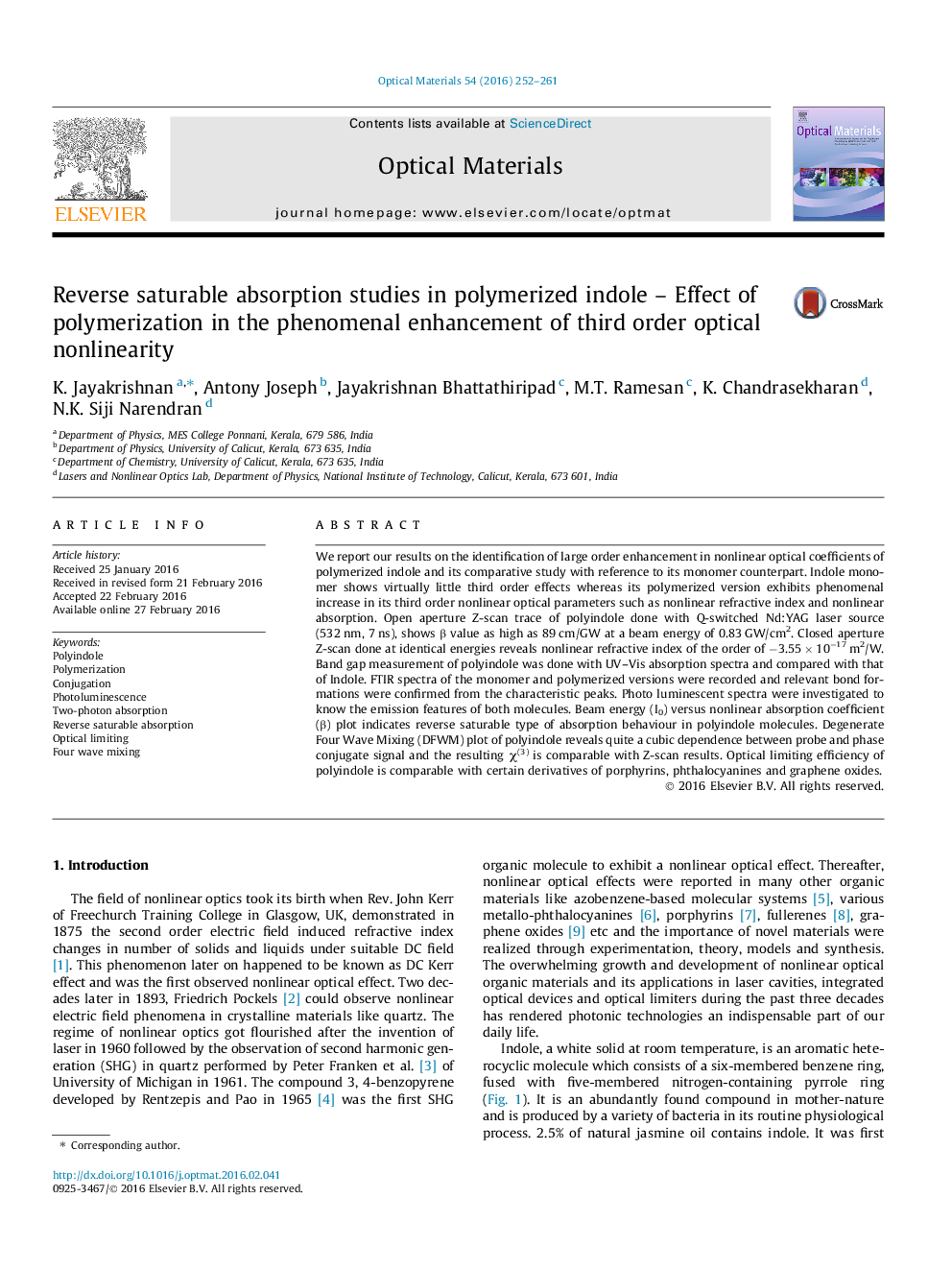| کد مقاله | کد نشریه | سال انتشار | مقاله انگلیسی | نسخه تمام متن |
|---|---|---|---|---|
| 1493502 | 1510780 | 2016 | 10 صفحه PDF | دانلود رایگان |

• Poluindole was synthesized via in-situ polymerization of indole monomer.
• Polyindole displays visible band luminescence emission with distinct peaks.
• At 0.83 GW/cm2 intensity, reverse saturable absorption is observed with 7 ns, 532 nm Gaussian laser pulses.
• Optical limiting threshold and figure of merit of the compound is estimated to be 0.6 GW/cm2 and 4.37 × 10−12 esu cm respectively.
We report our results on the identification of large order enhancement in nonlinear optical coefficients of polymerized indole and its comparative study with reference to its monomer counterpart. Indole monomer shows virtually little third order effects whereas its polymerized version exhibits phenomenal increase in its third order nonlinear optical parameters such as nonlinear refractive index and nonlinear absorption. Open aperture Z-scan trace of polyindole done with Q-switched Nd:YAG laser source (532 nm, 7 ns), shows β value as high as 89 cm/GW at a beam energy of 0.83 GW/cm2. Closed aperture Z-scan done at identical energies reveals nonlinear refractive index of the order of −3.55 × 10−17 m2/W. Band gap measurement of polyindole was done with UV–Vis absorption spectra and compared with that of Indole. FTIR spectra of the monomer and polymerized versions were recorded and relevant bond formations were confirmed from the characteristic peaks. Photo luminescent spectra were investigated to know the emission features of both molecules. Beam energy (I0) versus nonlinear absorption coefficient (β) plot indicates reverse saturable type of absorption behaviour in polyindole molecules. Degenerate Four Wave Mixing (DFWM) plot of polyindole reveals quite a cubic dependence between probe and phase conjugate signal and the resulting χ(3) is comparable with Z-scan results. Optical limiting efficiency of polyindole is comparable with certain derivatives of porphyrins, phthalocyanines and graphene oxides.
Figure optionsDownload high-quality image (136 K)Download as PowerPoint slide
Journal: Optical Materials - Volume 54, April 2016, Pages 252–261